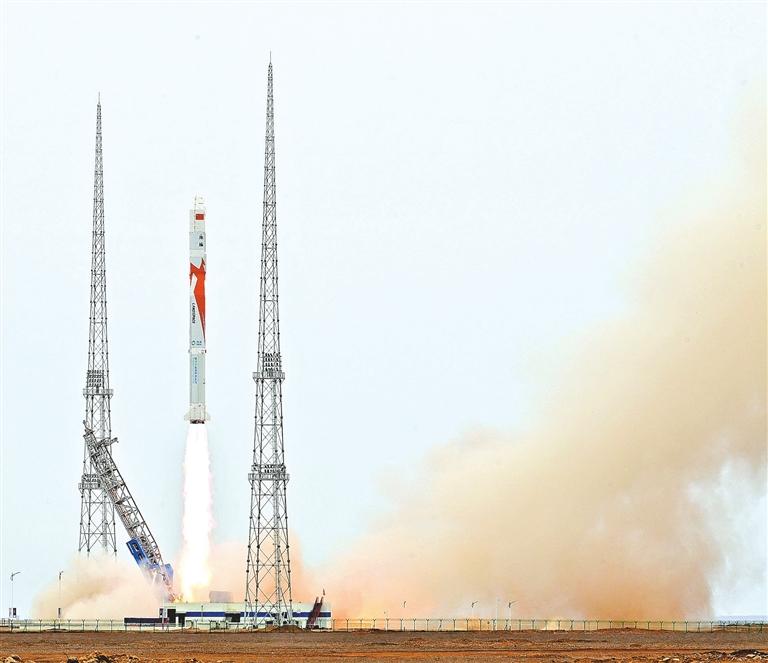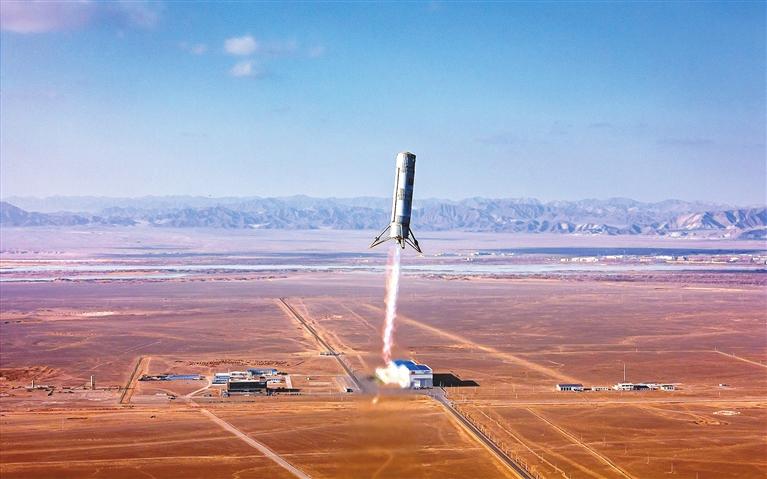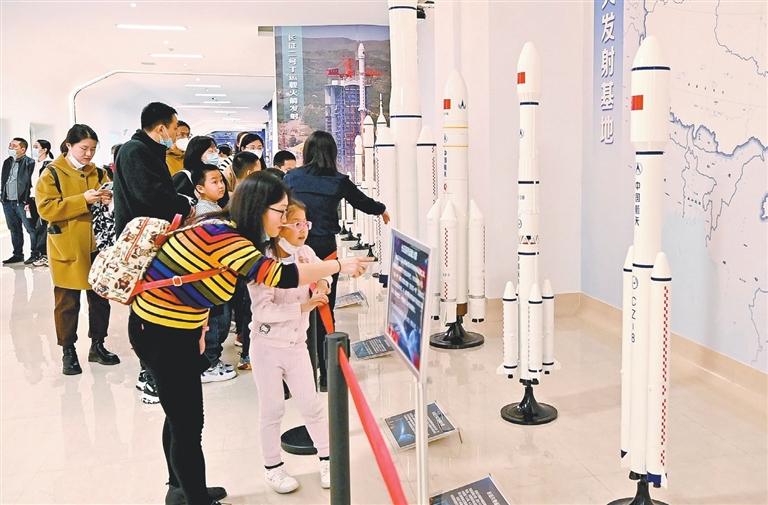


CHINA’S commercial space sector is experiencing rapid growth, and several prominent enterprises in the field have recently unveiled ambitious blueprints for future research and development endeavors. Private Chinese rocket company LandSpace expects its ZQ-3 reusable rocket to make its maiden flight in 2025, Zhang Changwu, founder and CEO of LandSpace, said at a forum held as part of the 15th China International Aviation and Aerospace Exhibition (Airshow China), which concluded Sunday in Zhuhai, Guangdong Province. LandSpace successfully completed 100-meter and 10,000-meter vertical take-off, vertical landing (VTVL) flight tests for the ZQ-3 earlier this year, indicating that it has achieved major breakthroughs in reusable rocket technology. The company expects to deliver six ZQ-2 rockets and conduct three ZQ-3 launch missions in 2025, Zhang said. He added that the combined annual launch capacity of the two rocket models will reach 244 tons by 2026, which will provide crucial support for the development of China’s satellite internet. Reusable rockets In 2023, China conducted 67 rocket launches. Thirteen of these launches were private commercial rocket missions, of which 12 reached orbit successfully. In recent years, China began deploying a large-scale network for several satellite constellations. The construction, maintenance, and replacement of the constellation systems will drive demand for intensive rocket launches. Domestic commercial rocket launch companies are united by the goal of developing reusable rocket technology. A commercial rocket company established in September under the China Aerospace Science and Technology Corp. (CASC) has the primary near-term task of developing a two-stage, four-diameter reusable launch vehicle based on liquid oxygen-kerosene engine technology, the company disclosed at Airshow China. “This type of rocket, which we aim for the top international level, should have high efficiency, performance, and safety levels and low costs,” said Wang Wenjie, the company’s general manager. To date, CASC has carried out nearly 550 launches, including 109 commercial missions. In the future, research into and the testing of key reusable rocket technologies, including vertical take-off, vertical landing, and rocket recovery technologies, will continue to lead the trend, Wang said. Commercial satellites China currently has 1,059 satellites in orbit, 492 of which are commercial satellites. At the forum, private satellite maker GalaxySpace revealed that it is developing next-generation communication satellites equipped with low-cost, large-aperture umbrella antennas. Development of the umbrella antenna prototype has been completed, said Xu Ming, founder and CEO of GalaxySpace. Resembling umbrellas, the new antennas can be folded to become smaller, potentially solving layout and envelope issues during launches. They may also contribute to the technological advancement of low-orbit broadband communication satellites. Changguang Satellite Technology Co., which launched the first group of its Jilin-1 commercial satellites in October 2015, is planning a new 200-satellite constellation equipped with both high temporal resolution and high spatial resolution. The company’s Jilin-1 constellation is now operating with more than 110 satellites and is capable of observing any point on the globe about 40 times a day. The new constellation will have a spatial resolution of 20 centimeters and be able to cover the whole globe once within a day. Its temporal resolution, combined with the Jilin-1 constellation, will make it possible to revisit any point on Earth in approximately three minutes, said Xuan Ming, chairman and general manager of Changguang Satellite Technology. A key aspect of satellite utilization is mass production. Mass production cannot be achieved simply by investing in a large amount of equipment or hiring more workers — it requires advanced design technology, Xuan said. “In the company’s initial phase, our overall technology led to the small-scale, workshop-style production of satellites. To achieve modern industrial mass production, we had to forget our experience five years ago and redesign our system,” Xuan said. Strong support By the end of June, 546 commercial space enterprises were registered and effectively operating in China, according to Wang Cheng, secretary general of the China Space Foundation. The country has issued a series of policies, including a medium and long-term development plan for civil space infrastructure from 2015 to 2025, to support and regulate the development of the commercial space industry. Li Guoping, chief engineer at the China National Space Administration (CNSA), disclosed at the forum that the country is mapping a development plan for civil space infrastructure from 2026 to 2035. The Central Economic Work Conference in December 2023 listed the commercial space industry as a strategic emerging industry, and the term was also included in the 2024 government work report delivered at this year’s “two sessions” — the annual sessions of China’s top legislature and political advisory body. Li highlighted that the commercial space industry should be included in the overall layout of China’s space development, and its development and security should be balanced. He called for improved support for access to the commercial space industry, including the strengthened management of rocket development licensing, large-scale testing and test stand construction, and research on commercial manned spaceflight and space object re-entry licensing. Improved support would also include optimized satellite development licensing, the removal of development and production qualification limits for satellites weighing more than 500 kilograms, an optimized launch permit process, and a strengthened approval process for commercial space projects, he added. Li expressed support for commercial satellite exports, commercial data application, and international commercial launch services. He urged strengthened safety supervision throughout the process of rocket development, including research and development, production, transport, testing, launch, measurement and control, and operations and re-entry. During the forum in Zhuhai, 20 companies launched an initiative for the safe, standardized, orderly, and healthy development of the commercial space industry. (Xinhua) | 
